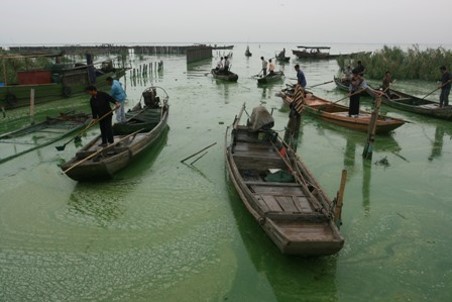Manufacturing has fueled China's rapid economic growth: though China's production accounted for about 3% of worldwide production in 1990, that figure has since risen to around 25%. However, China's rapid industrialization has also directly contributed to many of China's current environmental challenges.
As the workshop of the world, a giant chunk of China's manufacturing is for export. In other words, although factories in China consume vast amounts of energy and emit loads of pollutants, they are not solely to blame for China's pollution woes. Foreign brands, and foreign consumers, directly affect China's environment through their purchasing decisions – so they also shoulder a responsibility to push brands and factories to improve their environmental performance.
Many brands misguidedly focus their corporate social responsibility (CSR) efforts on less important areas, such as emissions reductions at office spaces or making end products more sustainable. But the vast percentage of corporate environmental footprintscome from manufacturing – in the supply chain. Companies that care about their carbon, water, or pollution footprint need to care about the factories in their supply chain.
The CITI index not only serves as a tool to benchmark brands' supply chain environmental performance, but also provides a road map for brands to green their supply chains and take responsibility for environmental impacts. Here's what brands can and should do to make agreen choice:

Air pollution

Water pollution

Soil pollution
Map supplier lists and screen for environmental compliance.
Brands can start by mapping deep into their supply chains –going beyond just direct first-tier suppliers to those supply chain segments that pose the most significant environmental impacts, such as materials suppliers. Brands can demonstrate accountability by publicly disclosing a list of their suppliers. Brands should focus on detecting and correcting environmental compliance problems among their suppliers. For suppliers located in mainland China, brands can use IPE's China Pollution Map Database to screen supplier lists for government-issued supervision records of environmental noncompliance and use this information to target their cleanup efforts.
Require suppliers to provide public explanations and take corrective actions.
The IPE database is centered on the idea that information transparency levels the playing field and helps overcome barriers to pollution control. Brands should require suppliers with supervision records to publish explanations about why issues occurred and what corrective actions they have taken to resolve such problems. To incentivize suppliers to verify the effectiveness of corrective actions, IPE also offers the option to de-list records from IPE's database upon completion of an on-site third-party GCA audit or off-site document review.
Use public data disclosure to track on-going environmental performance.
Disclosing emissions information helps brands to track on-going environmental performance of suppliers and protects public's environmental right-to-know. Brands can require their suppliers to disclose their annual emissions data on IPE's online platform, including pollutant release and transfer registry (PRTR) information, energy usage and greenhouse gas (GHG) emissions information. Brands can also actively monitor suppliers' real-time emissions data on the Blue Map app and local provincial platforms.
PRTR Disclosure Manual
Set targets for efficiency and emissions reductions that go beyond compliance.
If brands' suppliers are meeting the minimum standards for environmental compliance, they can do more – by pushing suppliers to further reduce their energy usage, water usage, and emissions. Data disclosure can serve as an important tool in this area by allowing brands to set actionable targets based on historical data and hold suppliers accountable for reductions.
Link environmental performance to supplier selection and incentivization.
Brands can facilitate environmental compliance by actively choosing to purchase from those suppliers with strong environmental performance and offering incentives to those suppliers that go above and beyond, showing that environmental performance and business benefits go hand-in-hand. Conversely, brands need to uphold business consequences for those suppliers that fail to meet standards or refuse to correct violation issues.
Brands that make a green choice not only ensure that their sourcing decisions are sustainable, but also actively contribute to solving pollution challenges in both China and beyond.